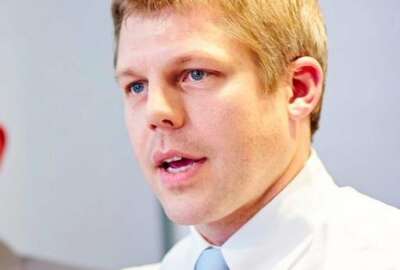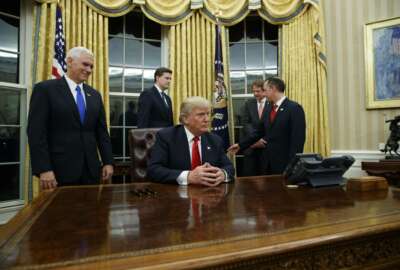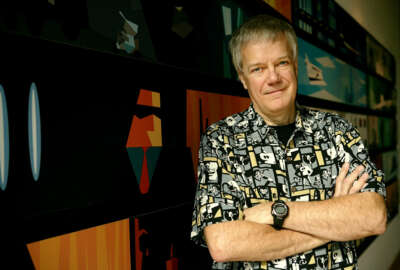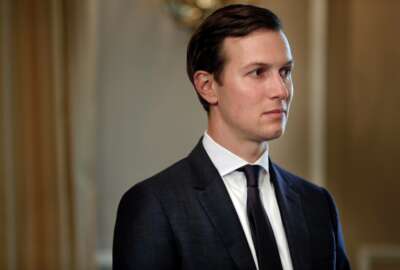
USDS, 18F, CoEs: The alphabet soup of IT modernization
The White House wants to bring experts in cloud, user design and analytics in to help agencies replace legacy systems.
As the Trump administration’s plan to modernize federal IT came together last week, it received broad support from industry and government experts alike.
Yes, the central fund that comes under the Modernizing Government Technology Act still is not funded. White House officials, though, still hold out hope that the Senate will add funding into the finalized fiscal 2018 spending bill.
And yes, the IT Modernization Strategy includes more than four dozen assorted deadlines over the next 30-to-240 days, many of which are unlikely to be met because that’s just how government works many times, but all are achievable and important.
It’s this last piece of the IT modernization puzzle, the newly introduced Centers of Excellence (CoEs), where the Trump administration begins to lose its way.
Federal observers are supportive of the concept of bringing federal, industry and research experts together to provide agencies with key skills to address cloud, customer experience, user design and analytics.
Why does the administration see the need to create the CoEs in the first place?
To at least this observer, it seems that the White House and the Office of Management and Budget are taking the easy way out by creating another organization instead of changing the focus of existing ones to do this not-so-sexy “plumbing” work.
As Office of American Innovation officials introduced the CoEs on Dec. 14 at the White House, the words they used, the description of what these experts will do — cloud, customer service, user-centered design, analytics, modern technologies — harkens back to what the previous administration said about the U.S. Digital Service and the 18F organization at the General Services Administration.
Back in March 2014, when GSA launched 18F, it said the organization, made up of Presidential Innovation Fellows, favored agile development based on customer feedback and analytics.
“First and foremost, by being focused on our users, we provide effective user-centered services focused on the interaction between government and the public it serves. At 18F, we want to build the 21st-century government you deserve,” GSA wrote in a Tumblr blog for 18F at the time. “Agencies should see 18F as a new way to procure, build and deliver innovative technology, digital services, and public-facing applications. We operate using three models: for you, with you, or by you. We can build your solution for you; work with your team and provide additional expertise or core capacity; or consult on how to build or buy user-centric interfaces most effectively. 18F’s team of experts is here to help. After all, we all share the same goal of delivering incredible, easy-to-use digital services for the people and businesses we serve.”
Chris Liddell, an assistant to the president and the White House’s director of strategic initiatives, said the CoEs can help accelerate the rate of progress by creating a central pool of resources to drive change.
“We want to leverage private-sector innovation,” he said. “If we staff it up, get great people, have them well organized, we can make a huge amount of change in a relatively short period of time.”
Shift the focus of USDS, 18F?
So the question then becomes: Why didn’t the administration shift the priorities of USDS and 18F to work on these infrastructure projects, instead of the high-profile programs USDS and 18F gravitated toward?
Was creating the CoEs easier than changing these two organizations, which have had a reputation for not being interested in basic blocking and tackling of federal IT modernization?
Joanne Collins Smee, the acting director of the Technology Transformation Service, who is leading the CoEs initiative, said the CoEs will merge with TTS, and that will give them opportunities to do the “sexy” projects, as well as the ones to address the “plumbing.”
“We had been focused on the fancy stuff and not enough on the plumbing, so we will do both,” Collins said. “But this focus on large-scale transformation is a new lens for the work we will be doing in TTS. We have brilliant men and women there. It may sound like another group, but we are merging two of the groups, and USDS is a very specialized skill, and I do work closely with [them].”
Smee added that the CoEs will charge fees for their services, similar to what 18F does today. She said agencies will have to pay for their IT modernization efforts out of their own funding, and then pay more for the CoEs’ expertise.
Karen Evans, the former e-government administrator under the George W. Bush administration and a former Energy Department CIO, said merging the CoEs and 18F could make a lot of sense.
“CoEs are the next evolution of USDS and 18F, and if it runs right and it’s managed right, you could further break those old molds,” Evans said. “You can get rid of old contracts and show return on investment, which is a big part of changing the culture of agencies. What you would do is have a short focus on what really should the architecture be, and then what you do when you procure and set up services over the long run. Once you figure out the architecture, then you put out the procurement and bring in the contractor, and these experts can make sure they do it right.”
Another sign could be the shakeup that happened last week within TTS, where Smee replaced Rob Cook as TTS director, and GSA moved Crystal Philcox, who had been assistant commissioner for operations in TTS since January, into a new position in the Federal Acquisition Service.
GSA confirmed that Cook is leaving government on Dec. 18.
“Rob has been a strong partner to work with as we merged FAS and TTS and I’m thankful for his service and leadership,” said FAS Commissioner Alan Thomas in a statement. “FAS is very proud of the work TTS has accomplished and we are committed to continuing to support the Administration’s focus on innovation and modernization in government.”
Sources say there was some sort of disagreement at a meeting with Cook and Thomas over the future of TTS that may have precipitated this personnel change.
IT modernization occupation force needed
Others say the CoEs are very different than USDS and 18F, and that’s a good thing, because there is plenty of work to go around.
Rob Klopp, the former Social Security Administration CIO, used a military analogy to compare USDS and 18F with the CoEs.
“USDS and 18F are like dropping a special forces team on top of a problem, or on top of a brand new app. They can change the tide of the battle, and then you would pull the team out to go do something else,” he said. “Their job was nothing to do with transforming culture, but not go in and work with agencies to change the way they approach IT. What you need now is an occupation force, which will go in and transform the agency. You can’t ask USDS and 18F to do a job they aren’t necessarily trained for.”
Tony Scott, the former federal CIO, expanded on Klopp’s analogy, saying USDS and 18F weren’t hired to transform agencies, but take care of big problems.
“If everyone in the organization believes they are part of the mission to transform and modernize, then folks can be catalysts and you have a great chance of success. If you just rely on the cool kids to make that happen and not engage the rest of organization who have skin in the game, then it will be much more difficult,” Scott said. “It’s a great goal to fix the underlying stuff, not just the front end. That is why you need collaboration across those spaces. You have to understand how the old stuff works, where the data is, the quality of the data and you need that coupled with people who have skills with more modern technology and they need to be working together as an integrated team to fix these big problems. It requires a big movement where everyone is aligned around the goal.”
USDS and 18F have matured over the last 18 months. In a recent interview, Eddie Hartwig, acting deputy administrator of USDS, told me his organization has moved away from just addressing projects in trouble, to helping agencies make sure their projects never get in trouble in the first place.
GSA’s 18F also has seen a lot of turnover in personnel and other changes in 2017 that may have been precursors to the possible merger with the CoEs.
What, if any, changes are coming for USDS and 18F will be worth watching over the next year, as the CoEs get going. But as of now, and on the surface, they sure look like duplicative efforts that this administration says it wants to stop having across the government. Let’s see how they live up to that goal.
Copyright © 2024 Federal News Network. All rights reserved. This website is not intended for users located within the European Economic Area.
Jason Miller is executive editor of Federal News Network and directs news coverage on the people, policy and programs of the federal government.
Follow @jmillerWFED
Related Stories

GSA envisions 18F will be the new hub of digital innovation
 Exclusive
Exclusive 




